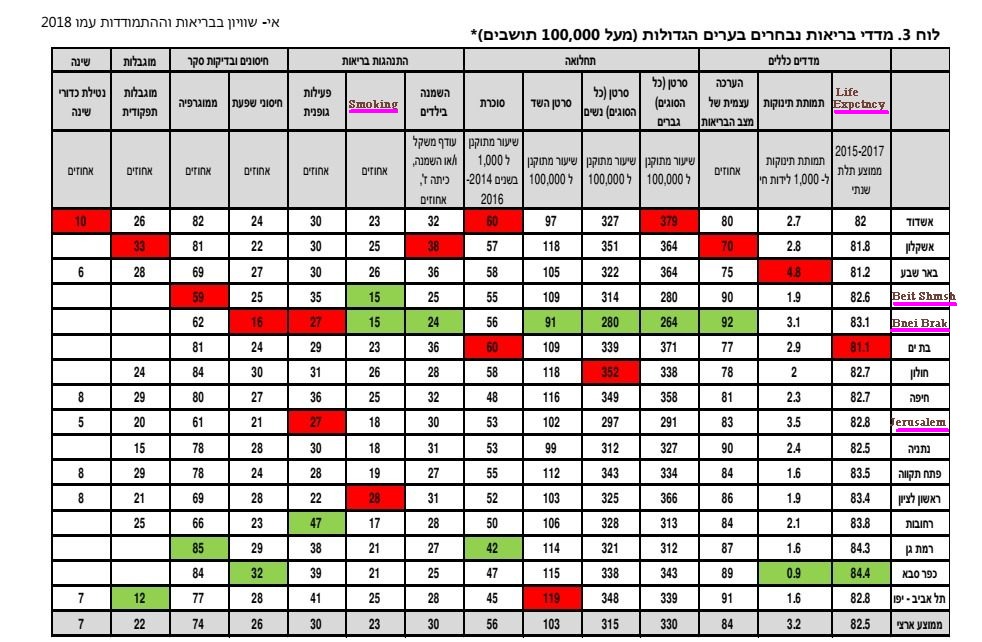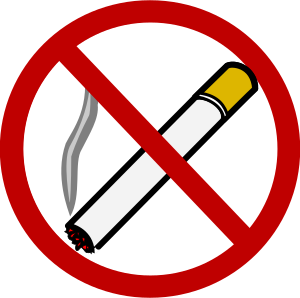A Summary of all the Findings - Some labels are in English

A table published by the Israeli Ministry of Health showing figures of the health status in different Israeli cities, shows various aspects of the health of various sectors of the population according to demographic features, social and economic aspects, financial status etc. It is interesting that higher economic status does not always equate to better health, especially with regard to chareidi cities. On the whole the report found that the outcomes vary quite widely from city to city. The subject of the report was the inequality in various aspects of health.
The report included the 16 largest cities in Israel whose populations range upward of 100 thousand. Included are Bnei Brak which is a dominantly chareidi city, and Beit Shemesh which also has a very high chareidi population.
In age groups the relatively young [population-age-wise] cities are: Beit Shemesh, with only 4% elderly residents (above age 65); Bnei Brak with 7% senior citizens, and Jerusalem, with 9% elderly citizens. Correspondingly, the percentage of children and youth up to the age of 17 in Beit Shemesh is 52%, in Bnei Brak 47% and in Jerusalem, 40%. Statistics for older [population-age-wise] cities: Bat Yam has 21% elderly citizens, Haifa has 20% and Ramat Gan 18%.
Bnei Brak is at almost the lowest level socioeconomically (in Cluster 2), and also has one of the lowest levels in preventive measures such as exercise, but its health is, b"H, quite good. The residents' subjective assessment of their health is very high at a level of 92 compared to a country-wide average of 84, and with good reason. For one, the incidence of cancer is significantly lower than the national average, both among men and among women. In fact it is lowest among the cities studied. The incidence is about 270 per 100,000 compared to a national average of around 320 per 100,000.

The level of smoking in Bnei Brak is among the lowest in the country at 15%. This is also true of Beit Shemesh. The national average is 23%.
The incidence of diabetes is the same as the national average, but the obesity among 7th graders in Bnei Brak is the lowest in the country. The level of physical activity is the lowest in the country. This is considered a negative, but it did not prevent Bnei Brak from achieving the other good results.
Jerusalem and Beit Shemesh are not as thoroughly chareidi, but on the whole their health statistics are also higher than average.
Although they were not included in this study since they are much smaller, both Kiryat Sefer and Beitar Illit also have relatively high health scores.
Life expectancy at birth is fairly high in Bnei Brak at 83.1 years. The highest is Kfar Saba at 84.4 years and the lowest is Bat Yam at 81.1 years.
The national average of those who get vaccinated for the flu is 26%, but in Bnei Brak it is only 16%. In Jerusalem it is 21% and in Beit Shemesh it is 25%.




